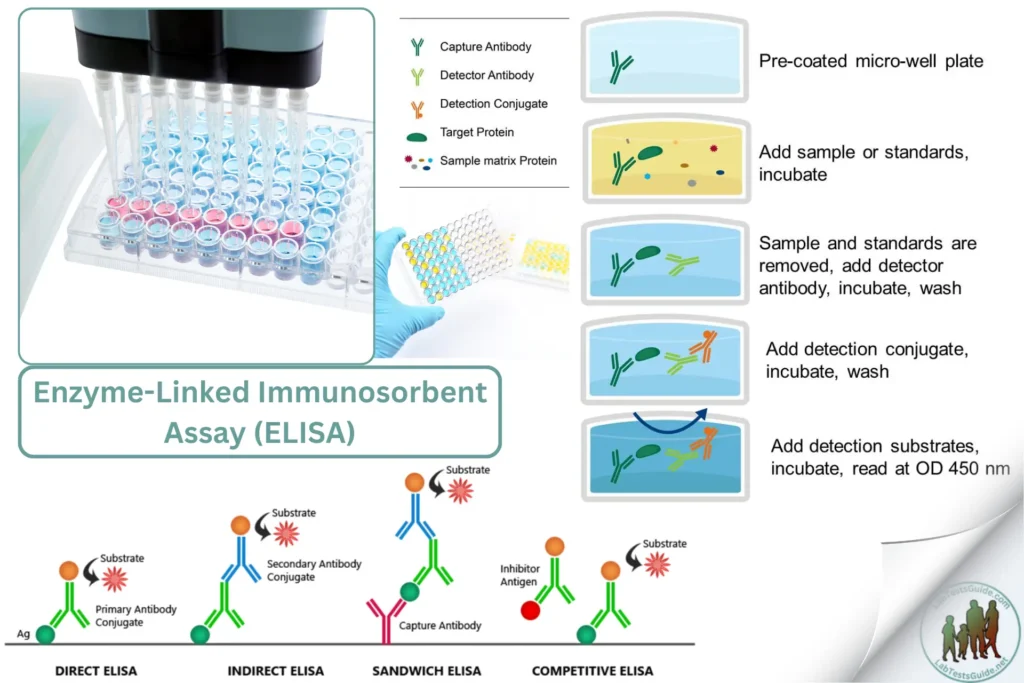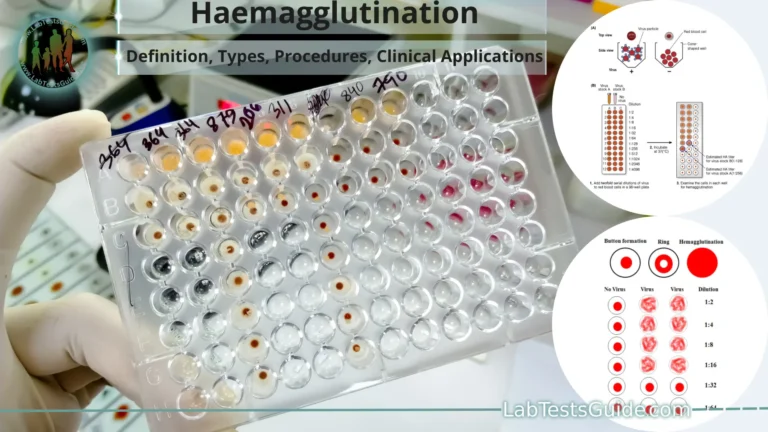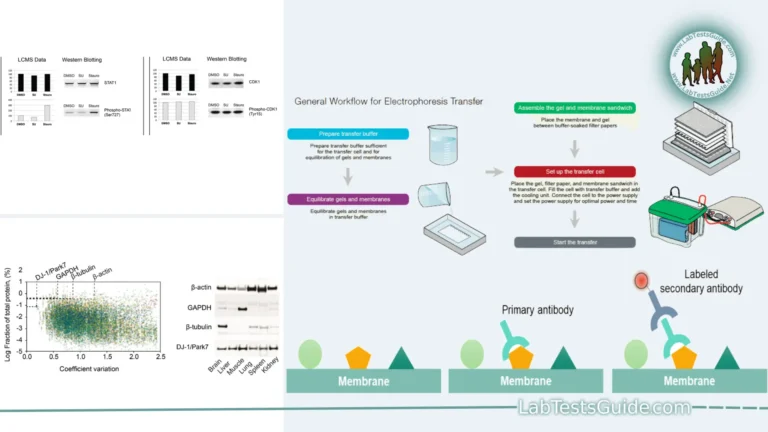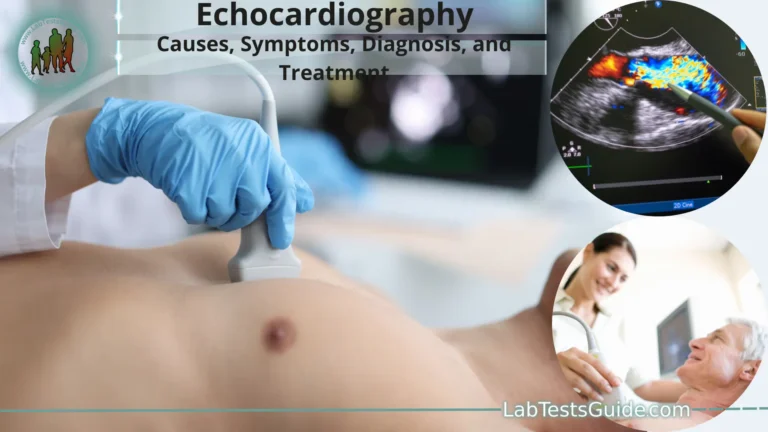The Enzyme-Linked Immunosorbent Assay (ELISA) is a widely used laboratory technique for detecting and quantifying soluble substances such as peptides, proteins, antibodies, and hormones. It is highly sensitive and specific, making it valuable for diagnostic purposes in various fields, including immunology, virology, and biochemistry.

Introduction:
The Enzyme-Linked Immunosorbent Assay (ELISA) is a widely used laboratory technique for detecting and quantifying soluble substances such as peptides, proteins, antibodies, and hormones. It is highly sensitive and specific, making it valuable for diagnostic purposes in various fields, including immunology, virology, and biochemistry.
Principle:
The ELISA method relies on the specific binding between an antigen and an antibody. The antigen is immobilized on a solid surface, and a specific antibody linked to an enzyme binds to the antigen. The enzyme’s activity is measured using a substrate that changes color when catalyzed by the enzyme, indicating the presence and quantity of the antigen.
Specimen Requirements:
- Type of specimen needed: Serum, plasma, or other bodily fluids
- Volume of specimen required: Typically 50-100 µL per well
- Collection method: Standard venipuncture for blood samples
- Handling and storage requirements: Store samples at 2-8°C for short-term storage and at -20°C or lower for long-term storage
- Stability of the specimen: Stable for up to 1 week at 2-8°C, and several months at -20°C
Reagents and Materials:
- Coating buffer (e.g., carbonate-bicarbonate buffer, pH 9.6)
- Washing buffer (e.g., phosphate-buffered saline with 0.05% Tween 20)
- Blocking buffer (e.g., 5% bovine serum albumin or non-fat dry milk in PBS)
- Primary antibody specific to the antigen of interest
- Enzyme-conjugated secondary antibody (e.g., HRP-conjugated anti-IgG)
- Substrate solution (e.g., TMB substrate for HRP)
- Stop solution (e.g., 1M H2SO4)
- Standard antigen for calibration curve
- Microtiter plates (96-well)
- Distilled water
Equipment:
- Microplate reader capable of reading at the appropriate wavelength (e.g., 450 nm for TMB substrate)
- Multichannel pipette and tips
- Incubator
- Plate washer (optional)
- Microcentrifuge (optional)
- Plate shaker (optional)
Procedure:
- Coating the Plate:
- Dilute the antigen in coating buffer to the desired concentration.
- Add 100 µL of the diluted antigen to each well of the microtiter plate.
- Incubate the plate overnight at 4°C or for 1-2 hours at 37°C.
- Blocking:
- Remove the coating solution and wash the plate 3 times with washing buffer.
- Add 200 µL of blocking buffer to each well and incubate for 1 hour at room temperature.
- Primary Antibody Incubation:
- Remove the blocking buffer and wash the plate 3 times with washing buffer.
- Dilute the primary antibody in blocking buffer.
- Add 100 µL of the diluted primary antibody to each well and incubate for 1-2 hours at 37°C.
- Secondary Antibody Incubation:
- Remove the primary antibody solution and wash the plate 3 times with washing buffer.
- Dilute the enzyme-conjugated secondary antibody in blocking buffer.
- Add 100 µL of the diluted secondary antibody to each well and incubate for 1 hour at room temperature.
- Substrate Addition:
- Remove the secondary antibody solution and wash the plate 3 times with washing buffer.
- Add 100 µL of substrate solution to each well and incubate in the dark for 10-30 minutes at room temperature.
- Stopping the Reaction:
- Add 50 µL of stop solution to each well to halt the enzymatic reaction.
- Reading the Plate:
- Measure the absorbance of each well at the appropriate wavelength using a microplate reader.
Quality Control:
- Include positive and negative controls on each plate.
- Run standard curves using known concentrations of the antigen.
- Ensure all reagents and samples are prepared and handled consistently.
Calculation and Interpretation:
- Calculate the concentration of the antigen in the samples using the standard curve.
- Reference ranges: Dependent on the specific antigen being measured.
- Possible sources of error: Improper washing, pipetting errors, cross-reactivity of antibodies.
Limitations:
- Cross-reactivity with similar antigens can lead to false positives.
- High levels of interfering substances in the sample (e.g., hemolysis, lipemia) can affect accuracy.
- Requires careful handling and precise timing to ensure reproducibility.
Safety Precautions:
- Wear appropriate PPE (gloves, lab coat, safety goggles).
- Handle all specimens and reagents according to standard biohazard precautions.
- Dispose of waste according to local regulations.
References:
- Engvall, E., & Perlmann, P. (1971). Enzyme-linked immunosorbent assay (ELISA). Quantitative assay of immunoglobulin G. Immunochemistry, 8(9), 871-874.
- Tietz Textbook of Clinical Chemistry and Molecular Diagnostics
- Manufacturer’s instructions for ELISA reagent kits
- Clinical Laboratory Standards Institute (CLSI) guidelines
This example can be modified to suit different types of ELISA tests, such as direct, indirect, sandwich, or competitive ELISA, by adjusting the specific details accordingly.
Possible References Used







